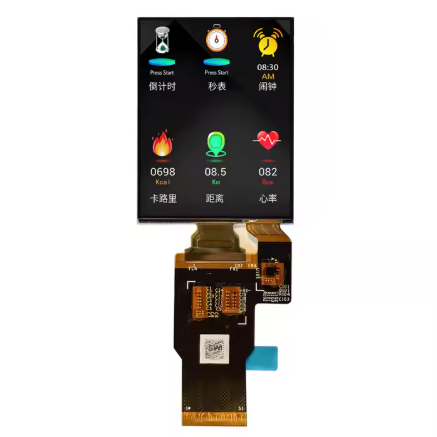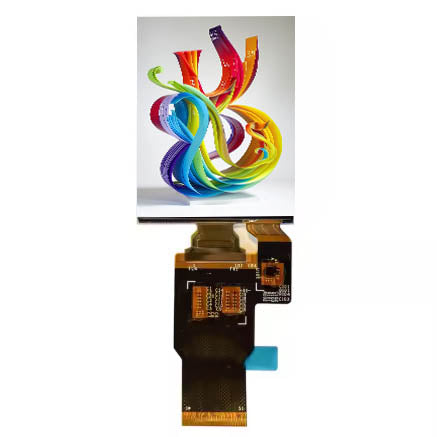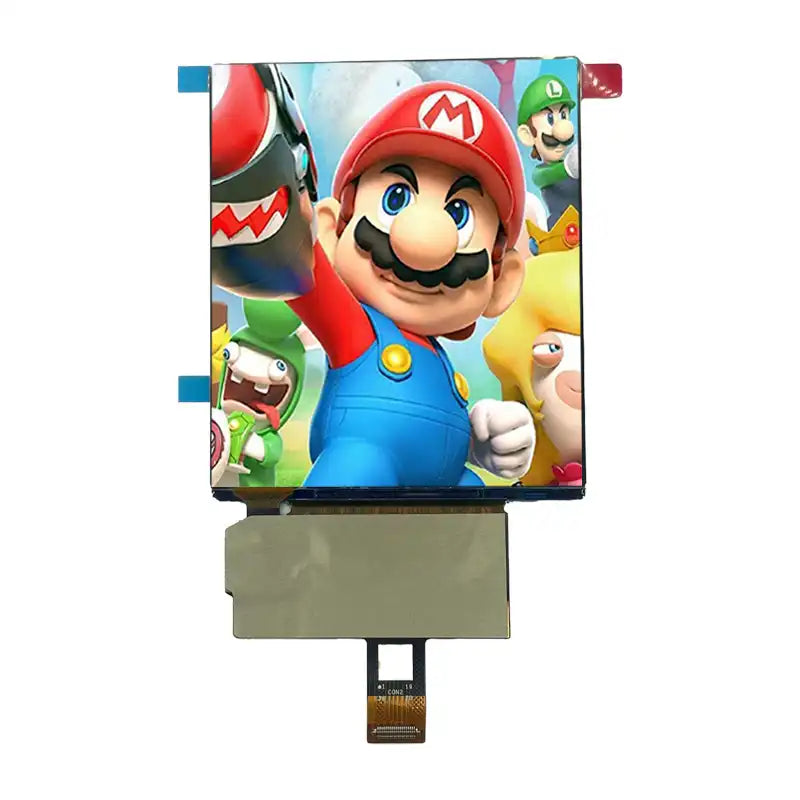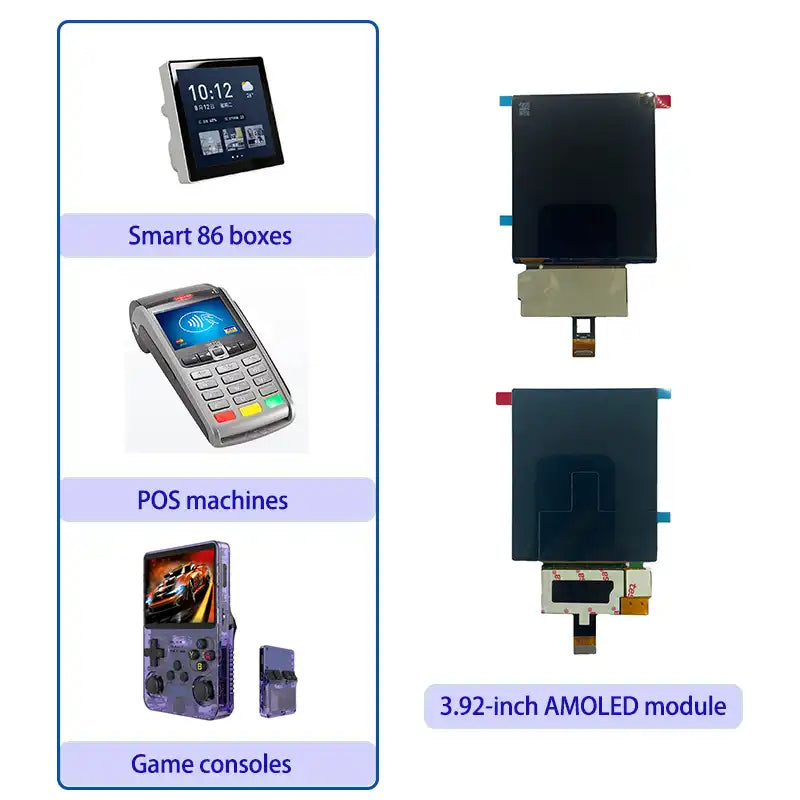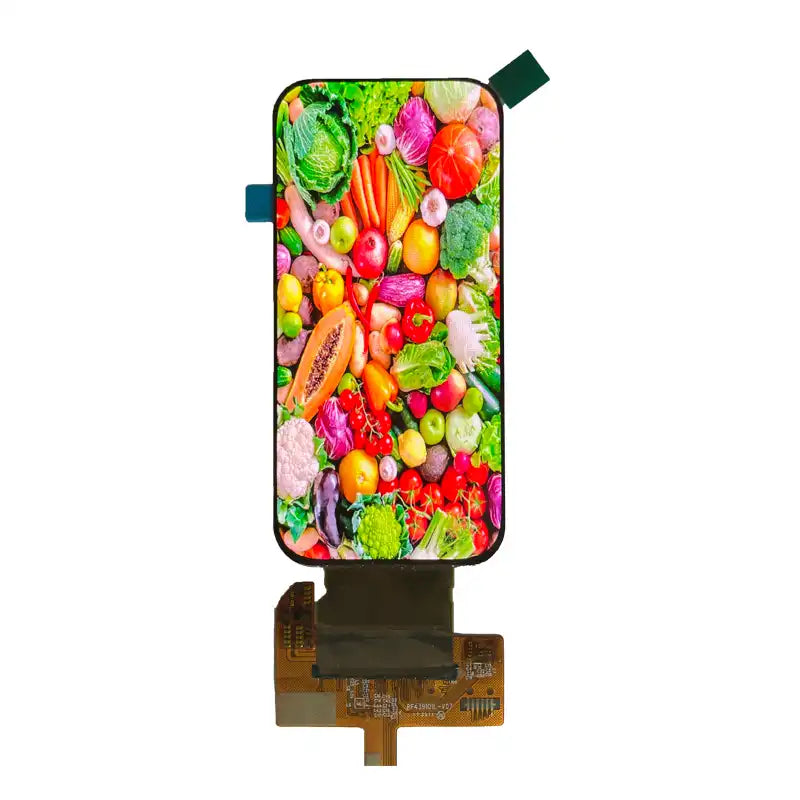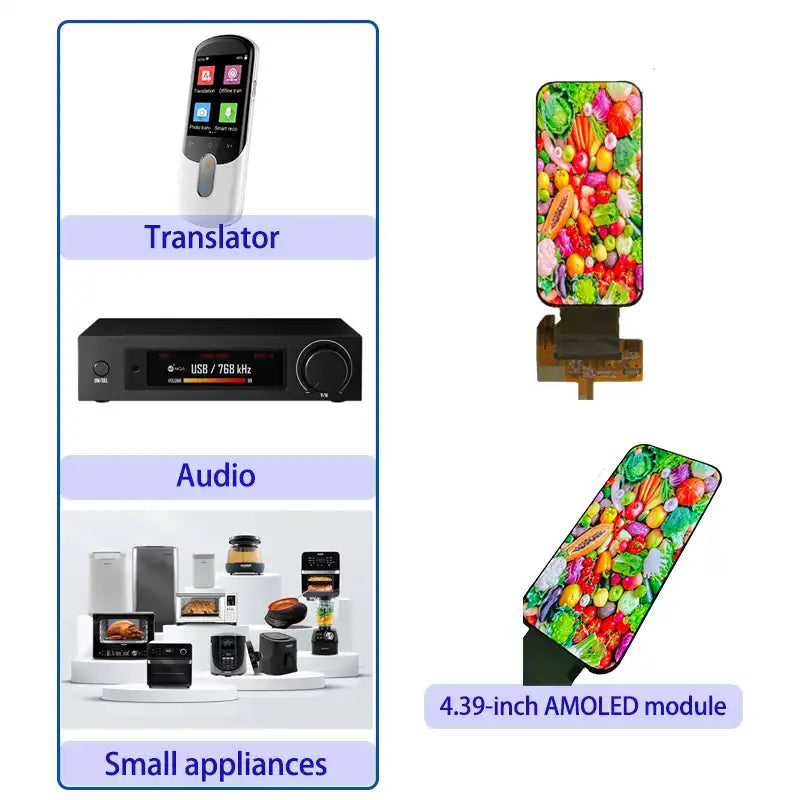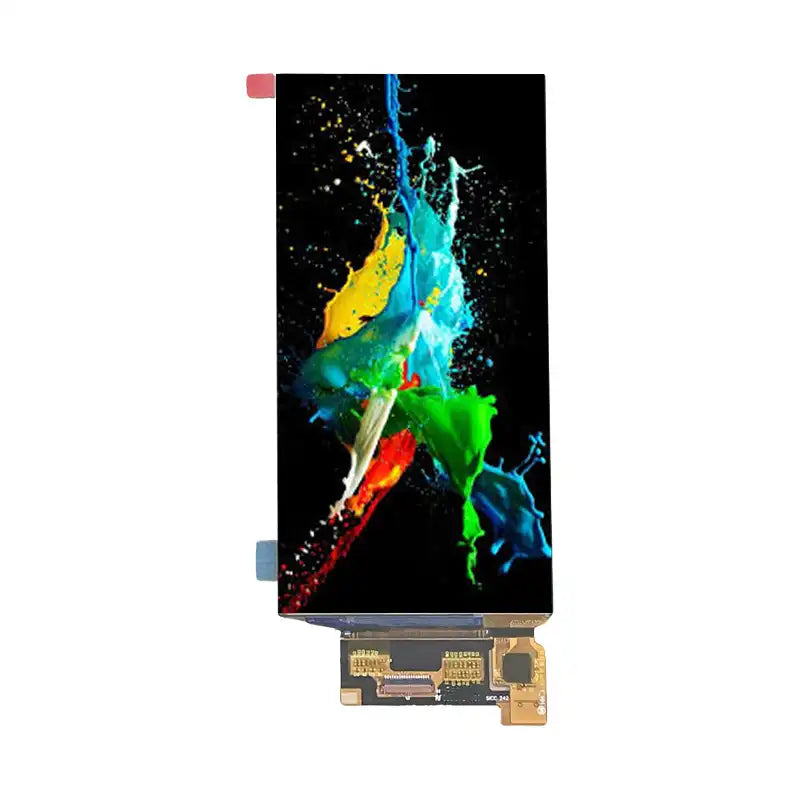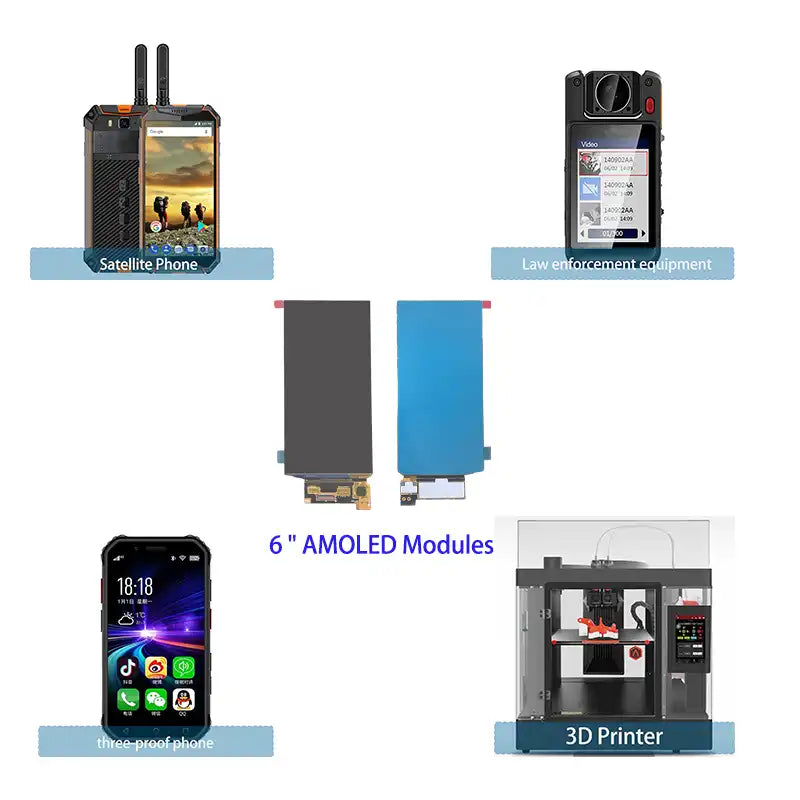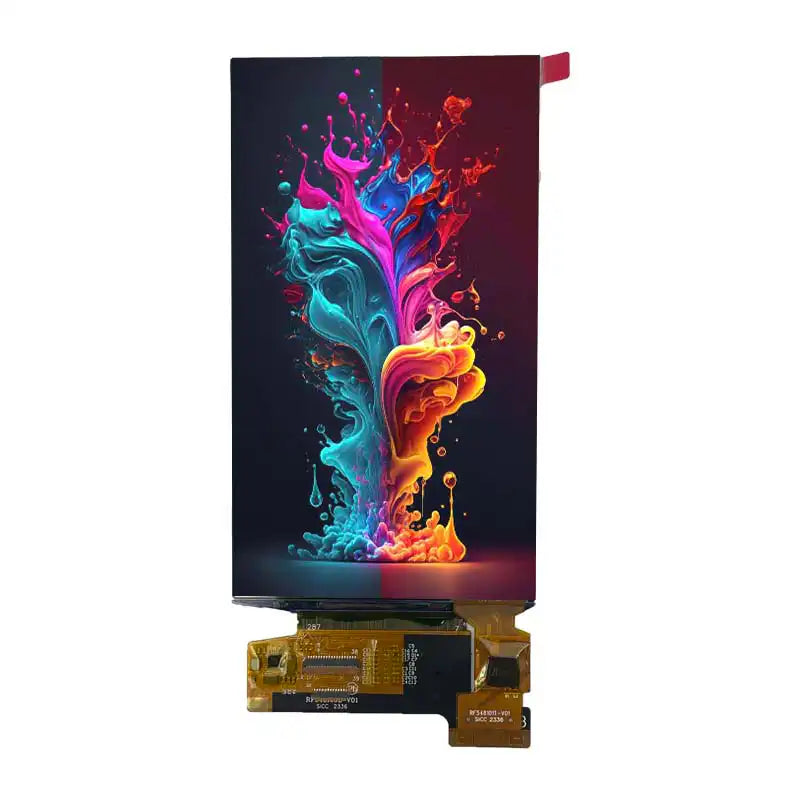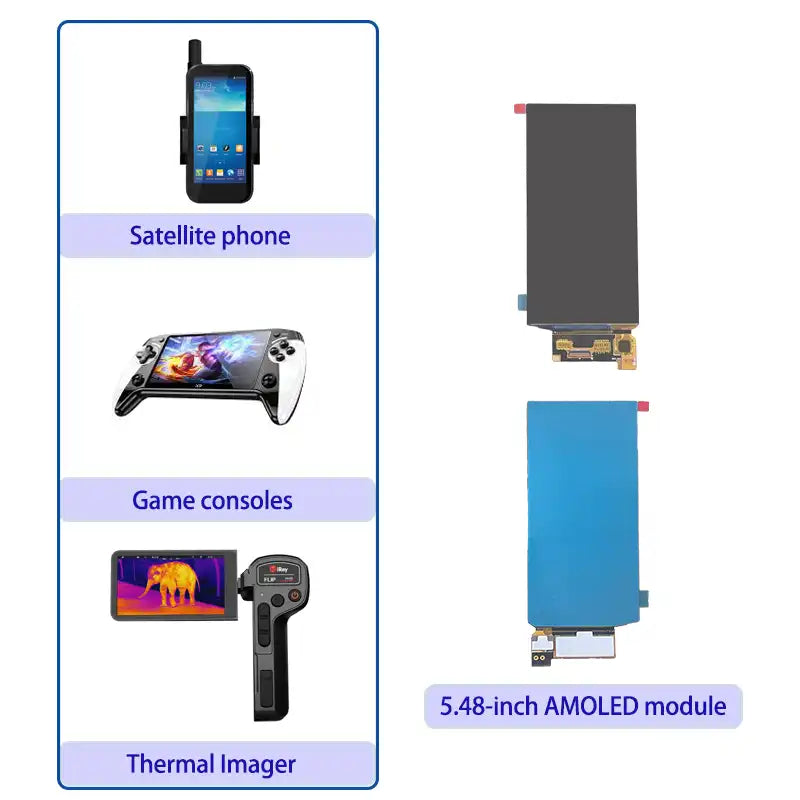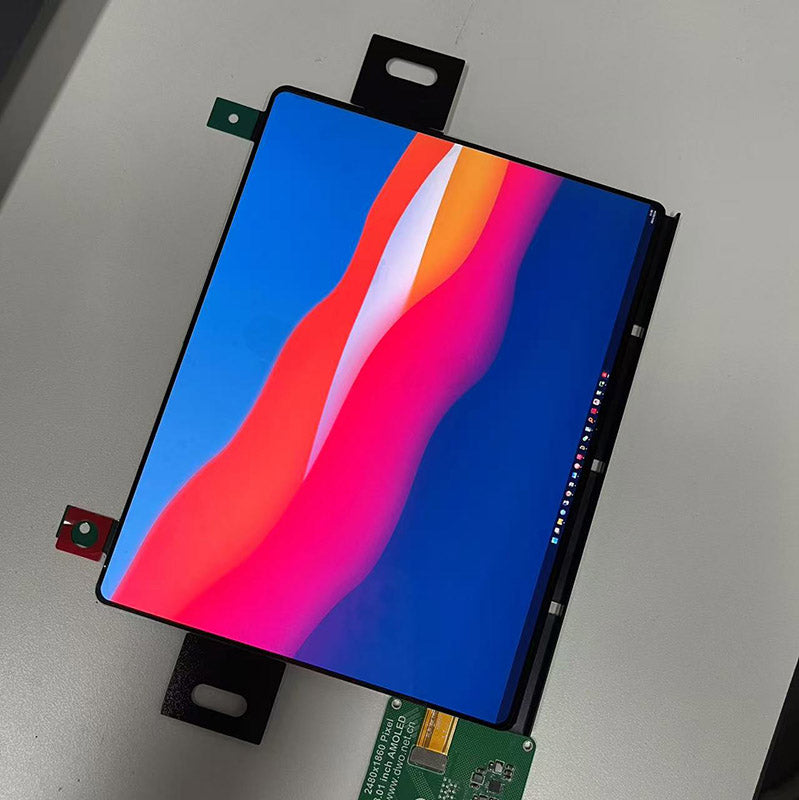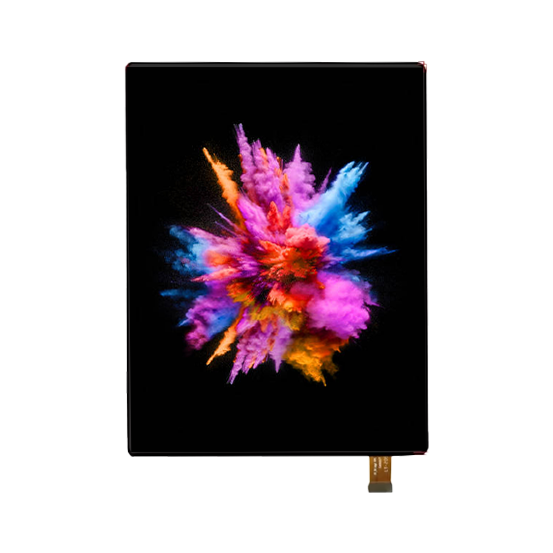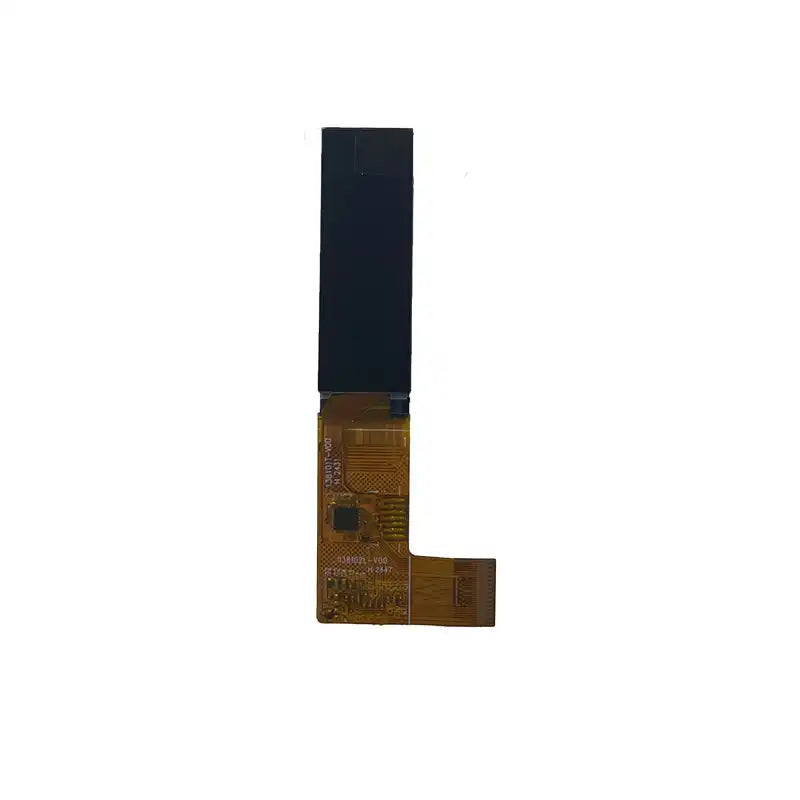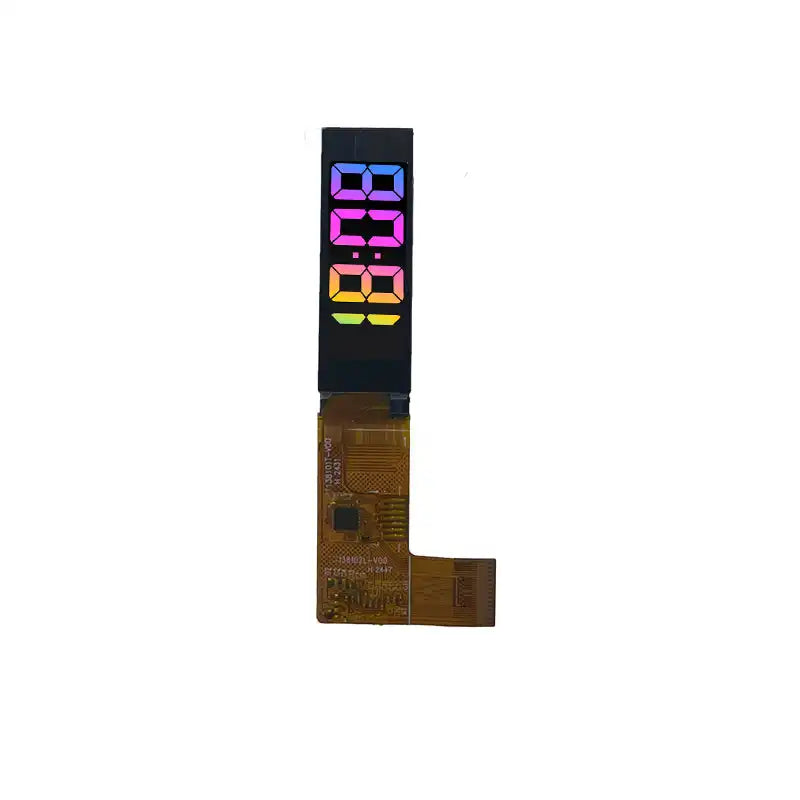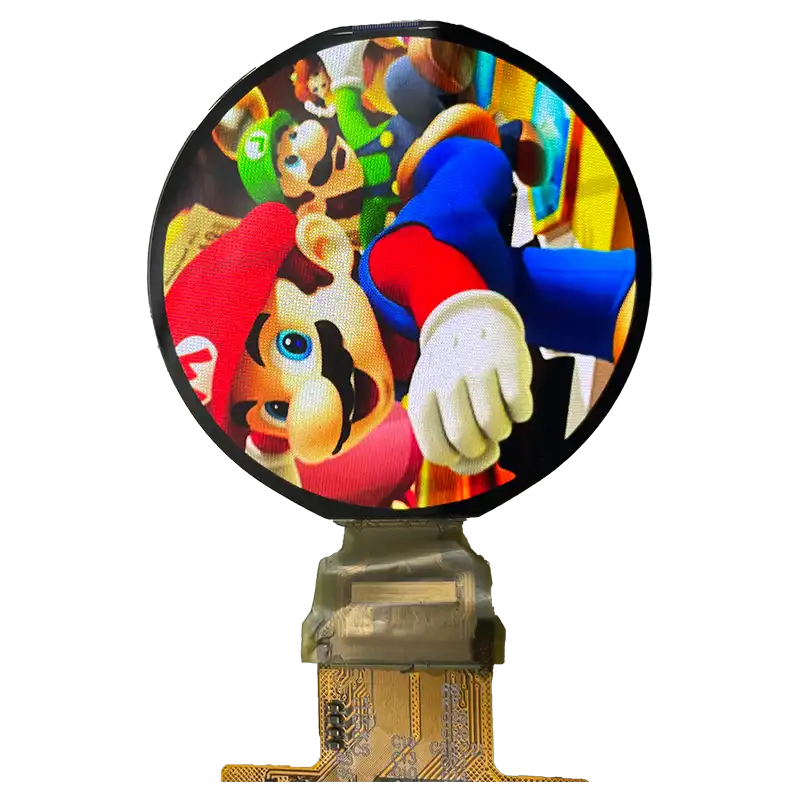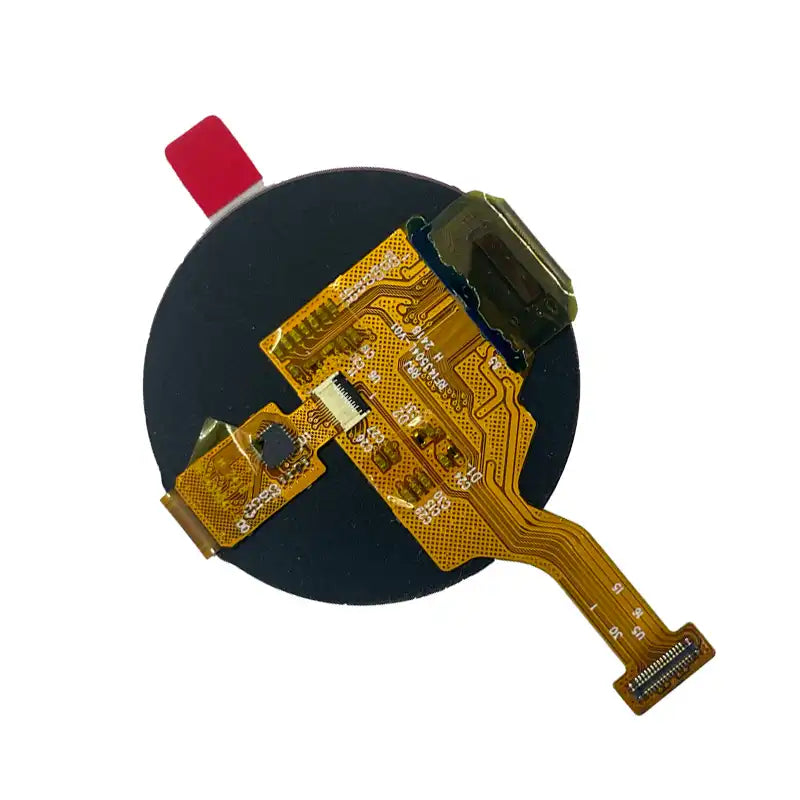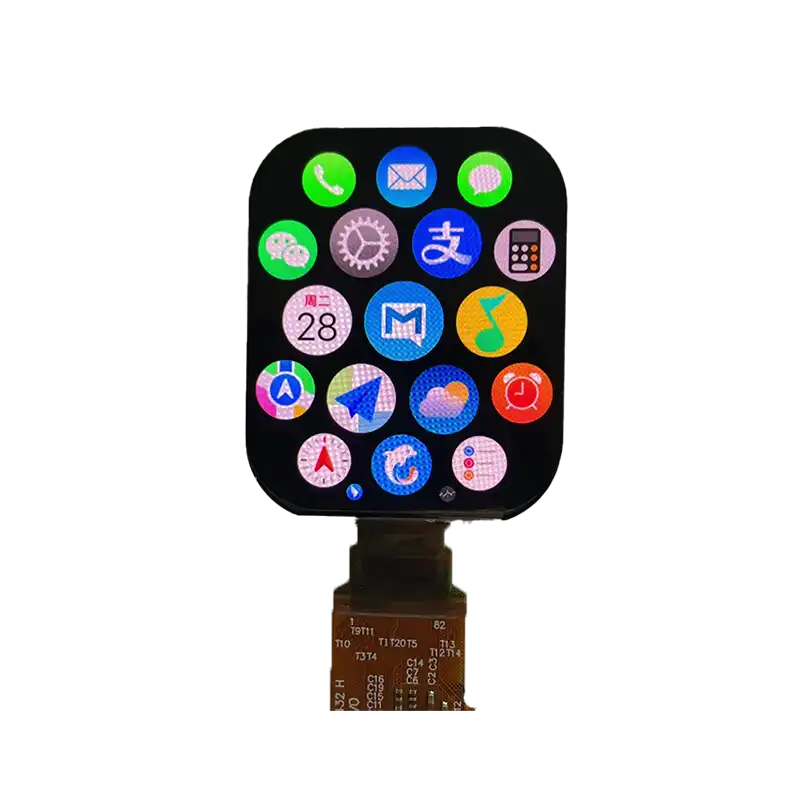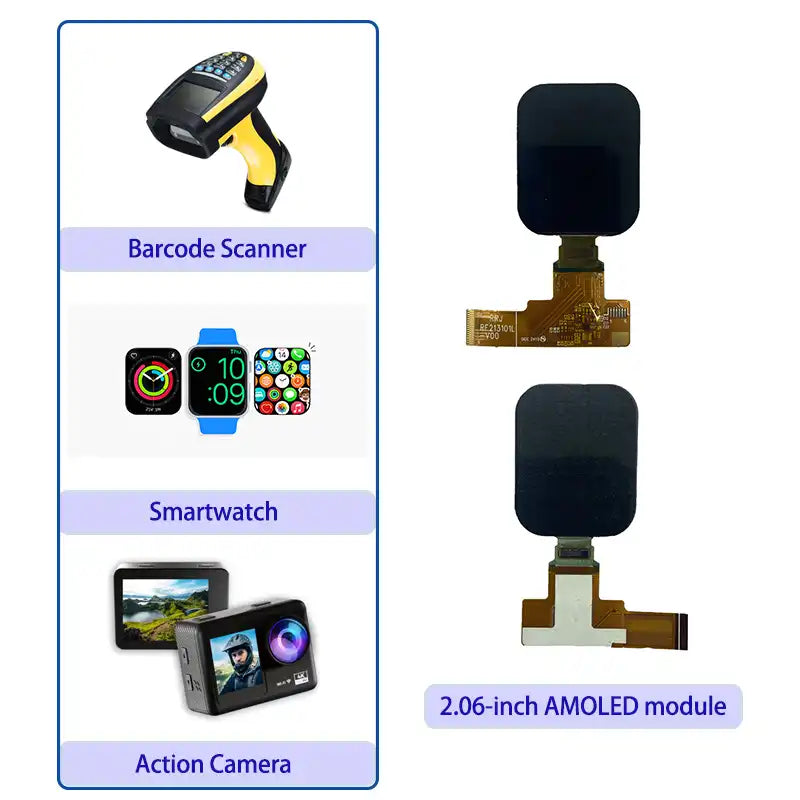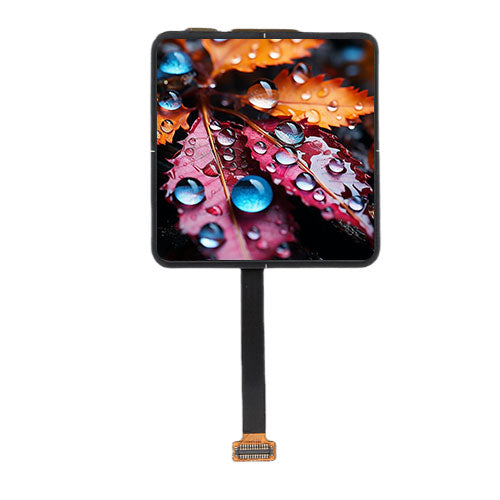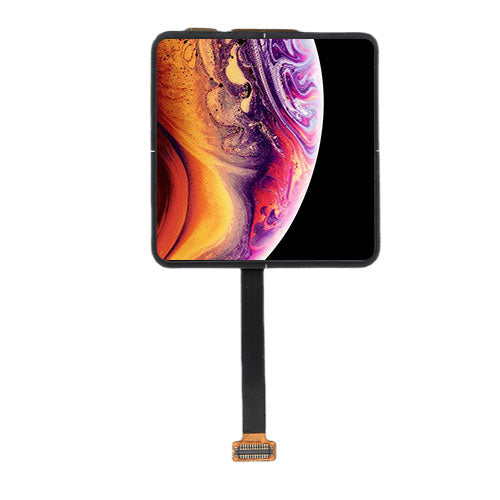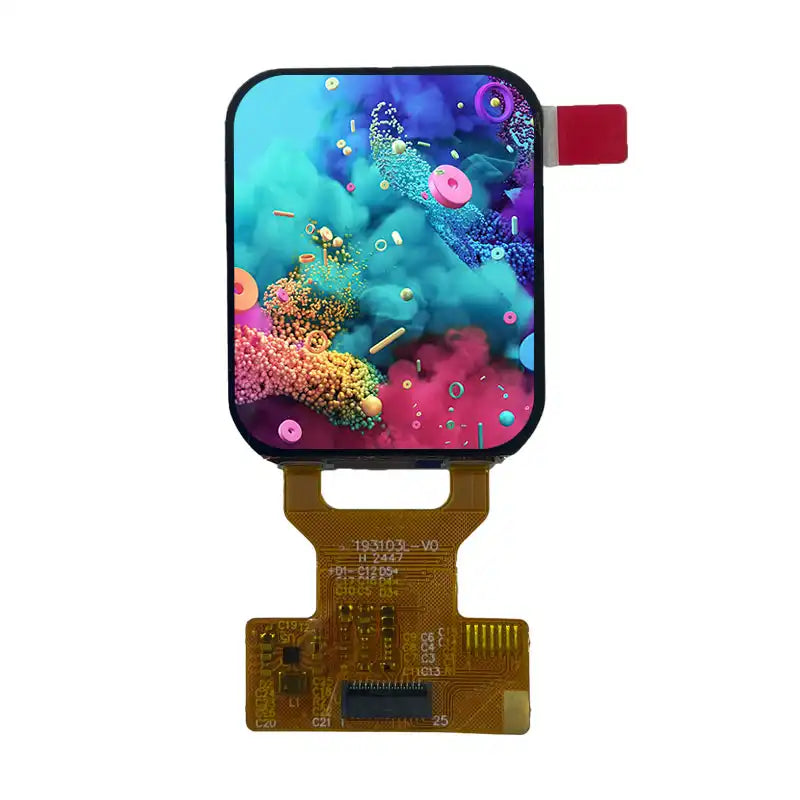
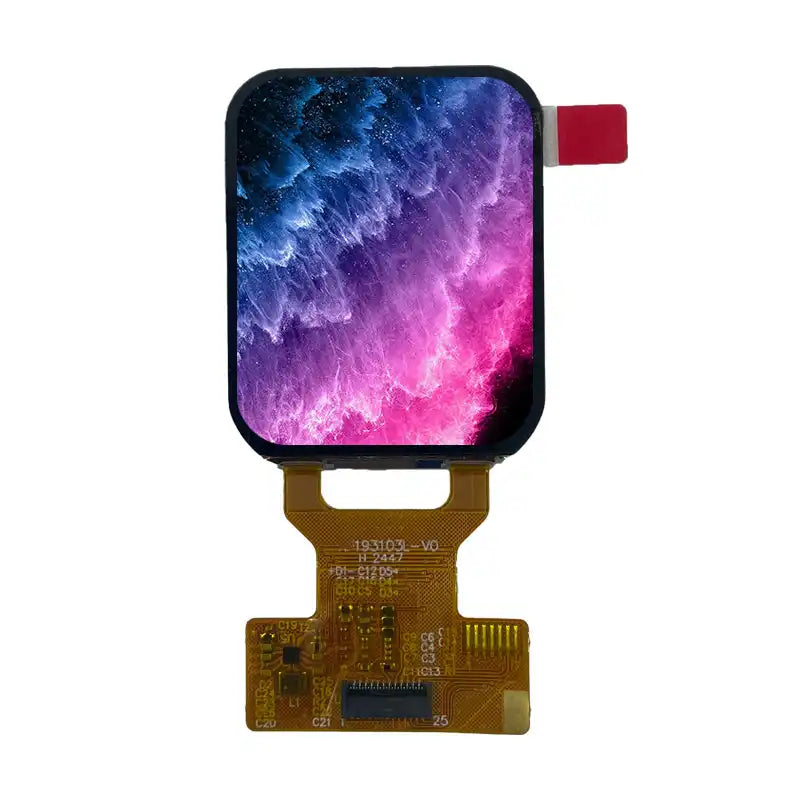
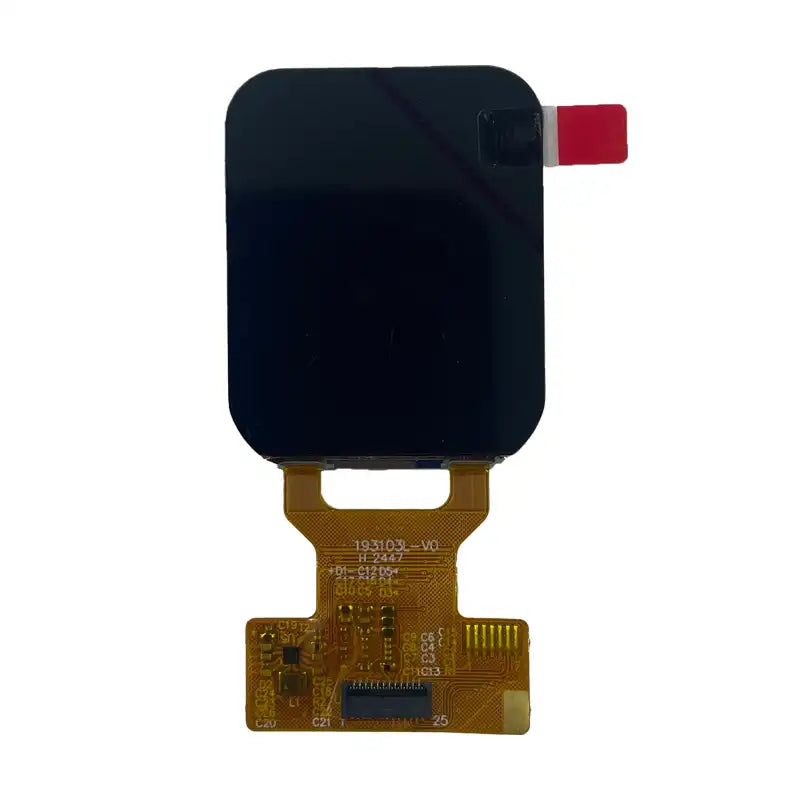
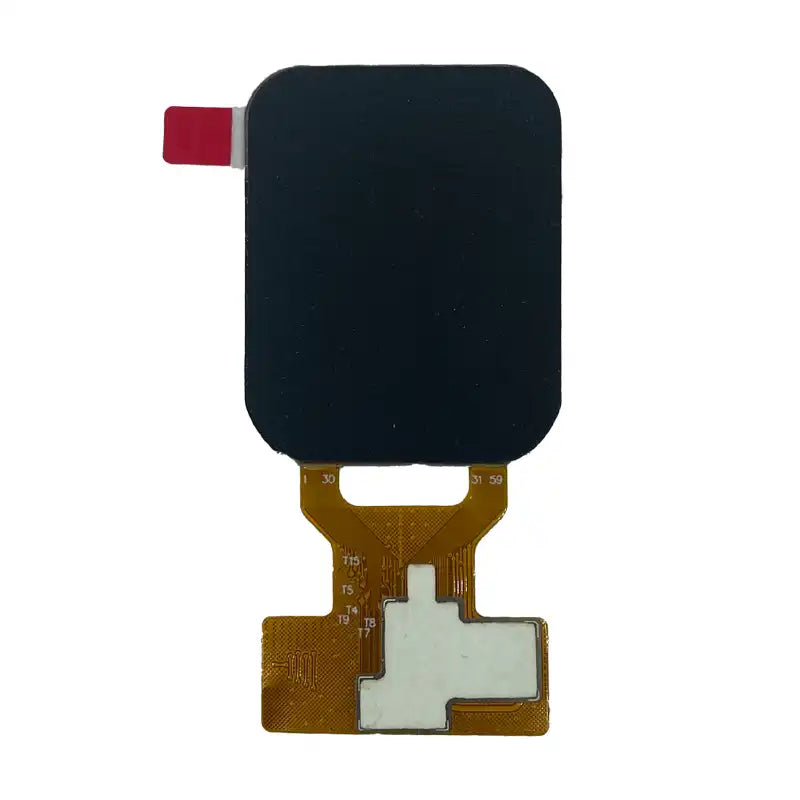
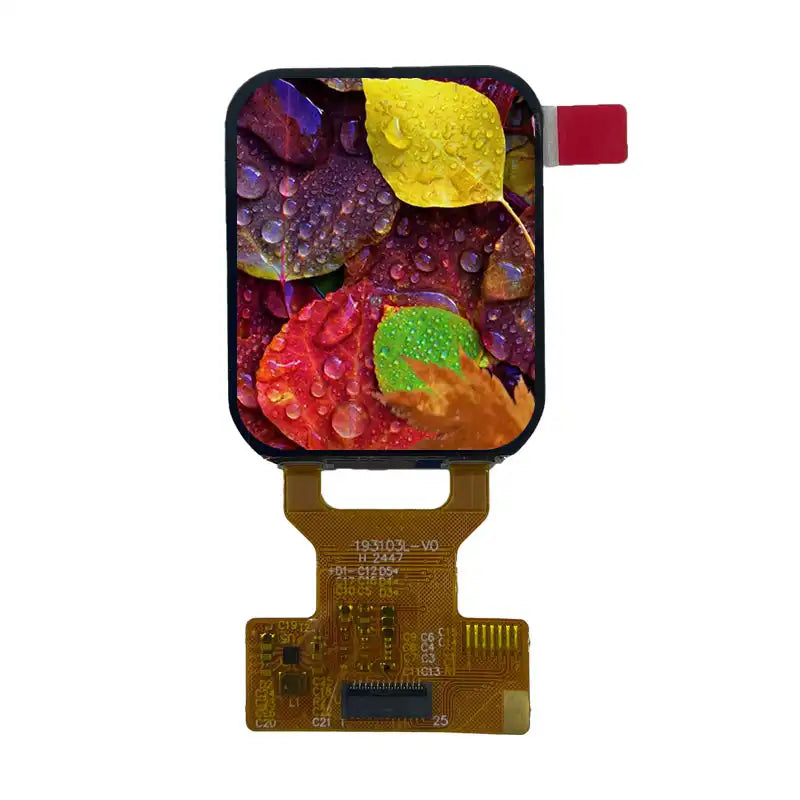
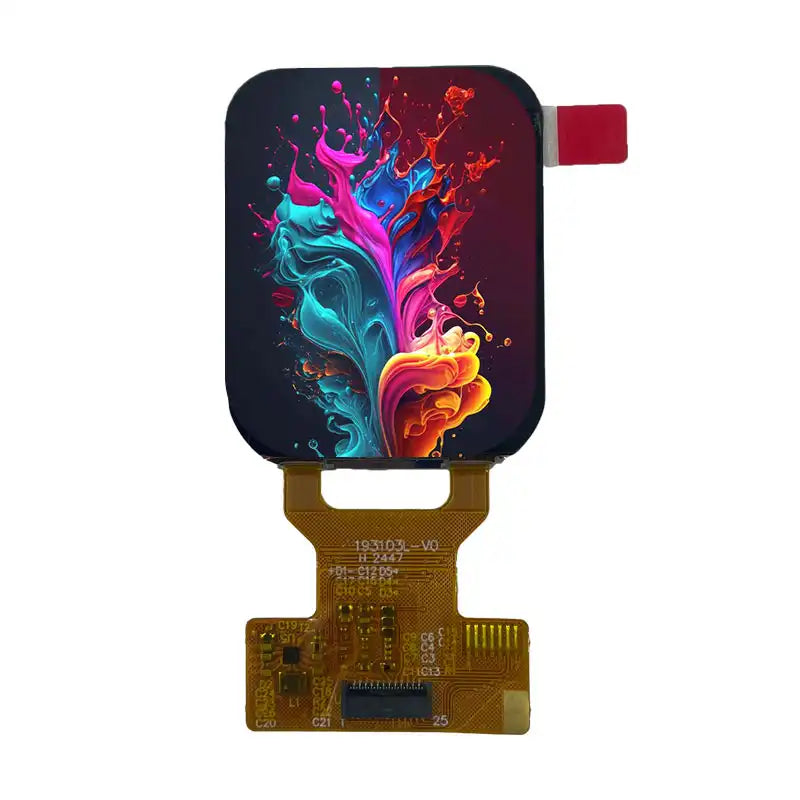
1.95 INCH AMOLED Display Module – High-Resolution Compact Display
High-Performance AMOLED Display Solutions
The 1.95-inch AMOLED module (Model: BR195103-A1) from Shenzhen Brownopto Technology Co., Ltd. is a high-resolution, compact display solution ideal for smartwatches, wearables, and portable devices. Featuring a sharp 368 × 448 resolution and vibrant AMOLED technology, this module delivers deep blacks, excellent contrast, and superior power efficiency. With a typical brightness of 600 nit and a contrast ratio of 60,000:1, it ensures excellent visibility in various lighting conditions. Designed with a QSPI interface and driven by the CH13620 IC, it offers reliable performance for modern embedded applications.
Key Features
- Display Size: 1.95 inch diagonal
- Resolution: 368 × 448 pixels
- Active Area: 30.912 × 38.1696 mm
- Module Outline: 32.672 × 41.0596 × 0.85 mm
- Technology: AMOLED (Active Matrix OLED)
- Display Colors: 16.7 million
- Interface: QSPI (Quad Serial Peripheral Interface)
- Driver IC: CH13620
- Luminance: 600 cd/m² (typ.)
- Contrast Ratio: 60,000:1 (typ.)
- Viewing Angle: 85° all directions (CR ≥10)
- NTSC Coverage: 100% (typ.)
- Lifetime (LT95): 200 hours (white pattern, 25°C)
- Operating Temperature: -20°C to +70°C
Technical Specifications
| Parameter | Value |
|---|---|
| Display Size | 1.95 inch |
| Resolution | 368 × 448 pixels |
| Active Area | 30.912 × 38.1696 mm |
| Module Outline | 32.672 × 41.0596 × 0.85 mm |
| Technology | AMOLED |
| Display Colors | 16.7 million |
| Interface | QSPI |
| Driver IC | CH13620 |
| Luminance | 600 cd/m² (typ.), 550 min |
| Contrast Ratio | 60,000:1 (typ.) |
| Viewing Angle | 85° all directions (CR≥10) |
| Uniformity | ≥85% (5-point measurement) |
| NTSC Ratio | 100% (typ.), 97% min |
| Lifetime (LT95) | 200 hours (white pattern, 25°C) |
| Operating Temperature | -20°C to +70°C |
| Storage Temperature | -30°C to +80°C |
| Frame Frequency | 60 Hz |
| Power Supply (VCI) | 2.7–3.6V (typ. 2.8V) |
| Logic Supply (IOVDD) | 1.65–3.6V (typ. 1.8V) |
| ELVDD Output | 3.5 V |
| ELVSS Output | -3.5 V |
| Power Consumption | 260 mW (typ., normal mode) |
| Weight | TBD |
| Compliance | RoHS |
Visual Inspection Criteria
Inspection is conducted under cold white fluorescent lighting (1000±200 lux), viewing distance of 30±5 cm, and viewing angle of 45°. Defects are judged against limit samples. (Ref: Specification Section 8.4)
| No. | Inspection Item | Acceptable Criteria | Defect Type |
|---|---|---|---|
| 1 | Broken Glass | Not allowed | MA |
| 2 | Crack | Not allowed | MA |
| 3 | Edge Collapse/Corner | Y ≤ 0.15mm: ignored; 0.15 < Y ≤ 0.4mm: X ≤ 2mm, N ignored; Y > 0.4mm: not allowed; Z ≤ t | MI |
| 4 | Flange | Y ≤ 0.2mm: allowed; Y > 0.2mm: not allowed | MI |
| 5 | Pin Dirty | No control | MI |
| 6 | Pin Scratch | Scratches allowed if no broken lead or overlap | MI |
| 7 | Screen Warpage | Lifting height ≤ 0.3mm | MI |
| 8 | Color Difference/Stain | No control | MI |
| 9 | Screen Body Dirty | Front can be wiped; back not controlled | MI |
| 10 | Point Defect | D ≤ 0.1 mm: ignored; 0.1 < D ≤ 0.15 mm: N ≤ 1; D > 0.15 mm: not allowed | MI |
| 11 | Linear Defect / Foreign Matter | W ≤ 0.03mm: omitted; 0.03 < W ≤ 0.05mm: L < 3.0mm, N ≤ 2; 0.05 < W ≤ 0.07mm: L ≤ 3.0mm, N ≤ 1; W > 0.07mm or L > 3mm: not allowed | MI |
| 12 | Mixture | Not allowed | — |
| 13 | Packaging | Clean, undamaged, with clear labels and QC signature | — |
Application Scenarios
The 1.95-inch AMOLED module is ideal for applications requiring high resolution in a compact form factor:
- Wearables: Smartwatches, fitness trackers, health monitors
- Portable Devices: Handheld terminals, smart remotes
- Consumer Electronics: Audio players, IoT controllers
- Industrial HMIs: Compact control panels, diagnostic tools
Handling Precautions
- Avoid mechanical pressure or bending on the display surface.
- Use ESD-safe tools and grounding during handling and assembly.
- Clean only with IPA and lint-free cloth; avoid abrasive materials.
- Follow the recommended power-on/off sequence (refer to datasheet Section 6.3–6.4).
- Store in a dry, dark environment to prevent OLED degradation.
Resource download: specification
Need the Full Datasheet?
Contact us for the complete specification, test reports, or sample requests.
Contact SalesFeatured collection
OLED Custom Solutions
Our company offers custom-made OLED solutions, tailored to your unique display needs, ensuring high-quality, precision, and satisfaction.
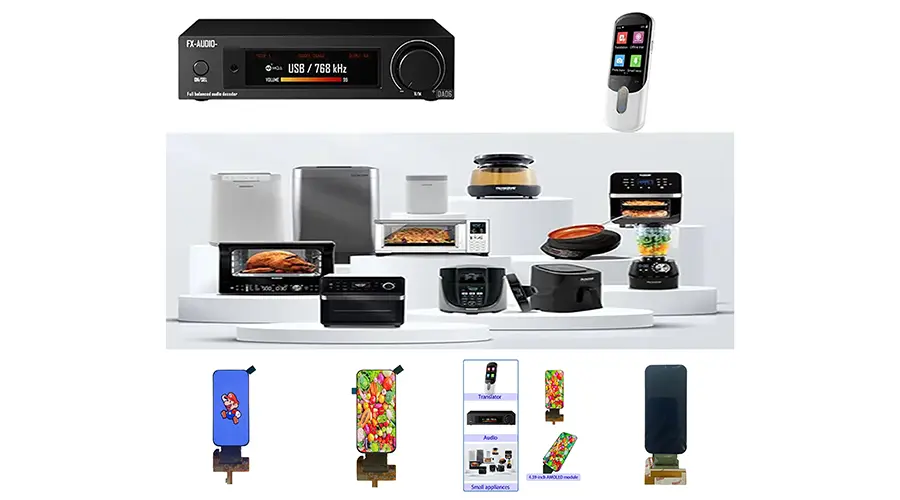
Size & Shape Customization
Tailor AMOLED dimensions and shapes (round, irregular, flexible/foldable) for wearables, phones, or industrial devices. Adjust form factors to match product design needs.
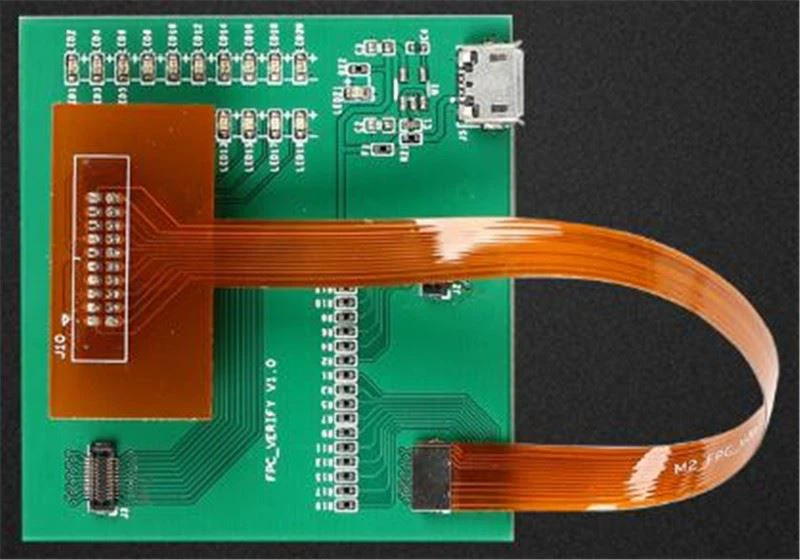
Resolution & Pixel Optimization
Offer HD to 4K+ resolutions and pixel densities for clarity. Enhance color accuracy and contrast for premium smartphones, tablets, VR/AR, and high-end displays.
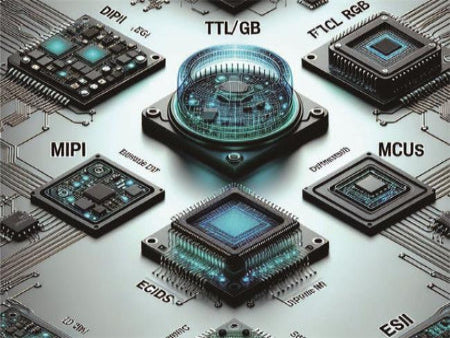
Interface & Driver Integration
Configure MIPI DSI/LVDS interfaces and driver ICs for seamless hardware compatibility. Add capacitive touch support for mobile, automotive, or industrial systems.
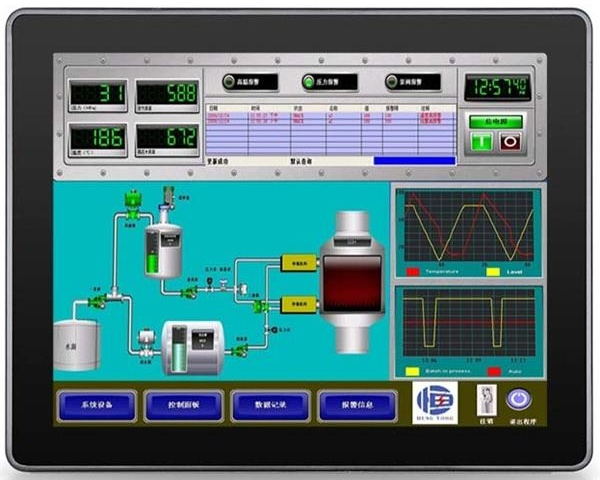
Optical & Durability Enhancements
Add anti-glare coatings, higher brightness, and IP-rated protection. Optimize for extreme temperatures, ensuring durability in outdoor, military, or harsh environments.
FAQ
Questions about OLED Displays
1. What factors affect the cost of a custom OLED?
- Size & complexity: Larger or flexible designs increase costs.
- Resolution/pixel density: Higher specs (e.g., 4K) require advanced manufacturing.
- Material quality: High-end materials (e.g., anti-glare coatings) add to pricing.
- Minimum order quantity (MOQ): Smaller batches may incur higher per-unit costs.
2. How long does it take to produce a custom OLED?
- Lead time: Typically 4–8 weeks after design approval, depending on complexity.
- Prototyping: Sample production takes 2–3 weeks for verification.
- Mass production: Delays may occur for high-volume orders or specialized components.
3. Can I request a flexible or foldable OLED?
- Yes, but with limitations:
- Flexibility: Curved designs require specialized substrates (e.g., polyimide).
- Durability: Foldable OLEDs need reinforced layers to prevent cracking.
- Cost: Flexible/foldable options are 20–50% more expensive than rigid panels.
4.How is the reliability of custom OLEDs tested?
- Key tests:
- Lifetime testing: Accelerated aging (e.g., 85°C/85% RH for 1,000 hours).
- Mechanical stress: Flexibility/folding endurance (100,000+ cycles for foldables).
- Environmental resistance: UV exposure, humidity, and thermal shock testing.
- Performance metrics:
- Luminance retention: >90% brightness after 10,000 hours.
- Color stability: Delta E < 3 for consistent color accuracy.
- Supplier accountability: Reputable manufacturers provide test reports and warranties (e.g., 2–5 years).
5.What industries benefit most from custom OLEDs?
- Consumer electronics: Smartphones, wearables, tablets.
- Industrial/medical: Control panels, diagnostic displays.
- Automotive: Dashboard screens, infotainment systems.
- Retail/entertainment: Digital signage, AR/VR headsets.

